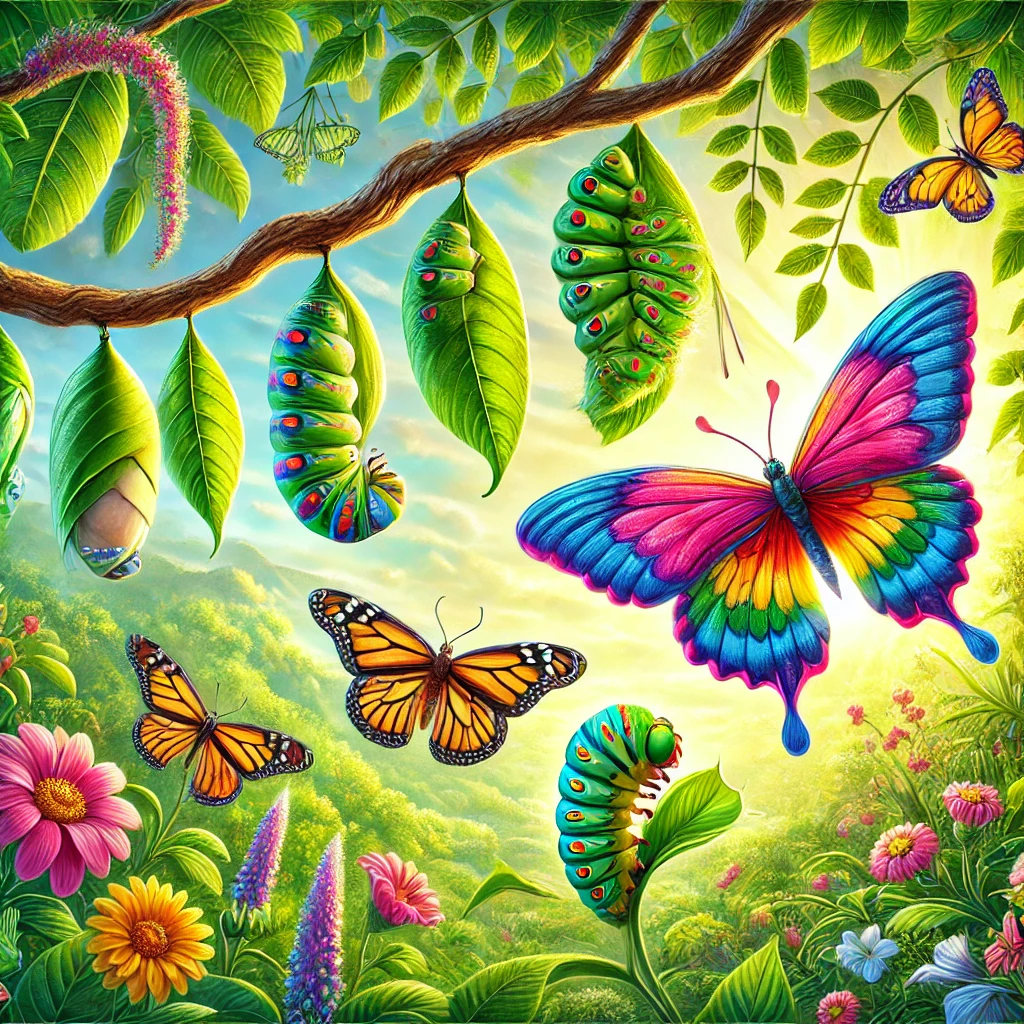Butterflies are among the most enchanting creatures on Earth, captivating humans with their vibrant colors, delicate wings, and graceful flight. These insects belong to the order Lepidoptera, which also includes moths. With over 17,500 species worldwide, butterflies are not only diverse but also play crucial roles in ecosystems, pollination, and even cultural symbolism.
Life Cycle: From Egg to Butterfly
The life cycle of a butterfly is one of nature’s most extraordinary transformations. It consists of four distinct stages: egg, larva (caterpillar), pupa (chrysalis), and adult butterfly. This process, known as metamorphosis, is a testament to nature’s capacity for change and adaptation.
1. Egg: A butterfly’s life begins as a tiny, often microscopic egg laid on a plant. The plant species is usually chosen carefully by the adult butterfly, as it will serve as the primary food source for the emerging caterpillar.
2. Larva (Caterpillar): Once hatched, the larva or caterpillar is solely focused on eating. It consumes vast quantities of leaves, growing rapidly and molting several times as it outgrows its skin.
3. Pupa (Chrysalis): After reaching its full size, the caterpillar forms a pupa or chrysalis. Inside this protective casing, the caterpillar undergoes a remarkable transformation. Its body breaks down into a sort of biological soup, which then reorganizes into the structure of an adult butterfly.
4. Adult Butterfly: The fully formed butterfly emerges from the chrysalis, its wings soft and folded. After pumping fluid into its wings to expand them, the butterfly takes flight, ready to fulfill its role in nature as a pollinator and, eventually, to reproduce.
Butterflies as Pollinators
While bees often steal the spotlight as pollinators, butterflies also play a vital role in pollinating flowers. As they feed on nectar, butterflies inadvertently transfer pollen from one flower to another, facilitating the reproduction of many plant species. Their long, slender proboscis allows them to reach deep into flowers, accessing nectar that other insects might not be able to reach.
Butterflies are particularly important in ecosystems where other pollinators might be scarce. Their preference for brightly colored flowers helps maintain the diversity of plant life, which in turn supports a wide array of animal species.
Butterflies and Their Habitats
Butterflies can be found in almost every part of the world, from tropical rainforests to temperate woodlands and even arid deserts. However, they are highly sensitive to environmental changes. Habitat destruction, climate change, and the widespread use of pesticides pose significant threats to butterfly populations.
Conservation efforts are crucial to preserving these delicate insects. Protecting and restoring natural habitats, reducing pesticide use, and planting native flowering plants can help support butterfly populations. Butterfly gardens, designed with specific plants that cater to the needs of local species, are becoming increasingly popular as a way to contribute to conservation.
Cultural Significance
Butterflies have long held symbolic meanings in various cultures. They are often seen as symbols of transformation, rebirth, and the ephemeral nature of life. In Japanese culture, butterflies represent the soul of the living and the dead. In Greek mythology, the butterfly is associated with the soul, with the Greek word for butterfly, “psyche,” also meaning “soul.”
In many cultures, the sight of a butterfly is seen as a good omen, a sign of change, or even a message from the spirit world. Their delicate beauty and seemingly magical transformation from caterpillar to butterfly have made them a powerful symbol in art, literature, and spirituality.
Conclusion
Butterflies are more than just pretty insects; they are essential components of our ecosystems and hold deep cultural significance. Their life cycle is a marvel of nature, demonstrating the incredible processes of growth and change. As pollinators, they contribute to the health and diversity of plant life, and their presence in our world is a reminder of the delicate balance of nature.
In a world facing environmental challenges, the conservation of butterflies is a small but significant step towards preserving the intricate web of life that sustains us all. So, the next time you see a butterfly fluttering by, take a moment to appreciate the beauty and wonder of these remarkable creatures.


Comments are closed.